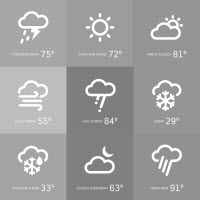Dry December Produces Below-Average Snowpack
Still Too Early To Draw Conclusions from Season’s First Snow Survey
SACRAMENTO – Today’s Department of Water Resources (DWR) manual snow survey east of Sacramento in the Sierra Nevada found little snowpack, which was predictable after a dry December throughout California. Measurements at Phillips Station revealed a snow water equivalent (SWE) of 0.4 inches, 3 percent of the average SWE of 11.3 inches in early January at Phillips as measured there since 1964 (http://bit.ly/2CjmFiV). SWE is the depth of water that theoretically would result if the entire snowpack melted instantaneously.
“As we’re only a third of the way through California’s three wettest months, it’s far too early to draw any conclusions about what kind of season we’ll have this year,” DWR Director Grant Davis said. “California’s great weather variability means we can go straight from a dry year to a wet year and back again to dry. That’s why California is focusing on adopting water conservation as a way of life, investing in above- and below- ground storage, and improving our infrastructure to protect our clean water supplies against disruptions.”
More telling than a survey at a single location, however, are DWR’s electronic readings today from103 stations scattered throughout the Sierra Nevada. Measurements indicate the SWE of the northern Sierra snowpack is 2.3 inches, 21 percent of the multi-decade average for the date. The central and southern Sierra readings are 3.3 inches (29 percent of average) and 1.8 inches 20 percent of average) respectively. Statewide, the snowpack’s SWE is 2.6 inches, or 24 percent of the Jan. 3 average.
“The survey is a disappointing start of the year, but it’s far too early to draw conclusions about what kind of a wet season we’ll have this year,” said Frank Gehrke, chief of the California Cooperative Snow Surveys Program who conducted today’s survey at Phillips. “There’s plenty of time left in the traditional wet season to reverse the dry trend we’ve been experiencing.”
California traditionally receives about half of its annual precipitation during December, January, and February, with the bulk of this precipitation coming from atmospheric rivers (ARs). So far this winter, an atmospheric high-pressure zone spanning the western United States has persistently blocked ARs from reaching the state. If that zone were to move or break up, storms could deliver considerable rainfall and snow this winter.
Davis noted that forecasting accuracy falls off dramatically after just a week or 10 days into the future. “Current technology and computer modeling can tell us what our weather might be weeks into the future, but we’re essentially blind to what the weather will be beyond the two-week mark,” he said. “That’s why we are putting in so much effort to improving medium- and long-range modeling.”
The Phillips snow course, near the intersection of Highway 50 and Sierra-at-Tahoe Road, is one of hundreds that will be surveyed manually throughout the winter. Manual measurements augment the electronic readings from the snow pillows in the Sierra Nevada that provide a current snapshot of the water content in the snowpack.
California’s exceptionally high precipitation last winter and spring has resulted in above-average storage in 154 reservoirs tracked by the Department. DWR estimates total storage in those reservoirs at the end of December amounted to 24.1 million acre feet (MAF), or 110 percent of the 21.9 MAF average for the end of the year. One year ago, those reservoirs held 21.2 million acre-feet (MAF), 97 percent of average. End-of-year storage is now the highest since December 2012 (24.3 MAF), which was early in the first of five consecutive water years of drought in California.
DWR conducts five media-oriented snow surveys each winter near the first of January, February, March, April, and May. On average, the snowpack supplies about 30 percent of California’s water needs as it melts in the spring and early summer. The greater the snowpack water content, the greater the likelihood California’s reservoirs will receive ample runoff as the snowpack melts to meet the state’s water demand in the summer and fall.
